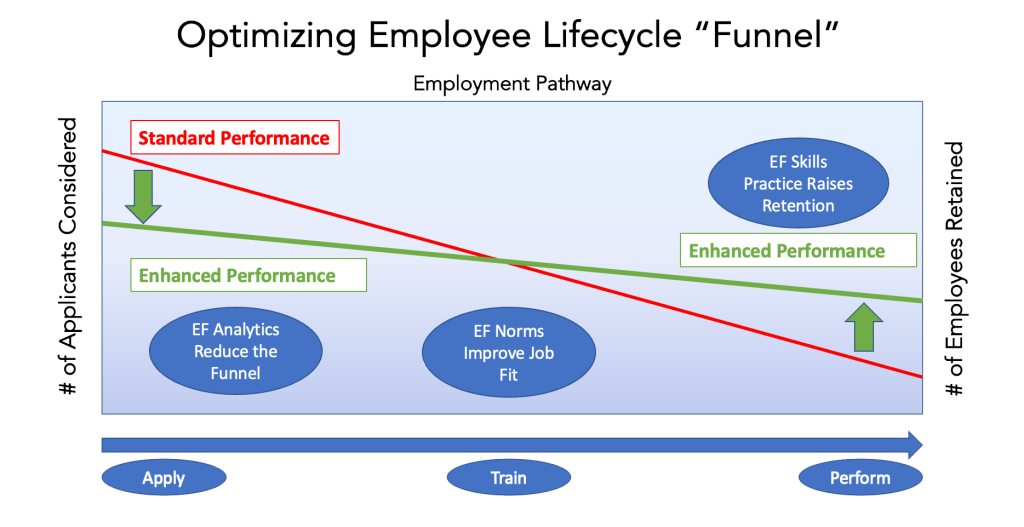Connecting employee and customer retention:
It can be surprising how many organizations operate without a central focus on the two most interdependent retention metrics:
These metrics end up being inextricably linked when leadership focus and organizational measurement is placed on people themselves to better understand the causes of turnover and churn — and conversely, the sources of operational strength and business growth potential from a stable, highly productive workforce.
According to a long-term analysis of industrial accounts from Zintoro Analytics, “Employee Impact on Customer Retention” has been documented historically as:
For every year a customer is retained, their transactions and revenues on average multiply by up to 2X, whereas many companies retain less than 50% of their customers over the course of 3 years. This means much money and effort is invested to end up standing still.
But most of this waste is preventable when the executive executive function and cognitive reflection skills that underlie employee retention are measured and correlated to the human factors that determine customer turnover and churn.
Optimizing the employee lifecycle “funnel”:
When an organization commits to optimizing the employee lifecycle, the benefits are demonstrated through a funnel encompassing the arduous process required to recruit, on-board, and bring an employee up to full productivity through a high level of engagement and career development.
Imagine the costs and lost revenues that pile up when it normally takes up to two years before an employee becomes fully productive. On the flip side, imagine the costs and length of time it takes — often ranging from 2 to 5 years — to acquire a new customer or a fully activated one. Against these investments of time and money, consider how quickly employees and customers can be lost through one, or a few, missteps — whether they’re minor or major.
Modeling these impacts and losses through a Total Cost of Productivity framework cannot be done through traditional financial statements, which only show what exists, not what could be. The executive function and reflective thinking assessment and human-centered productivity system provided by Reflective Performance can break the logjams of organizational stasis and empower employees to “think forward” to embrace change in their personal and work lives. Why not make a commitment to hold onto your people and customers and make your assets fully productive at every level?

Unlock the potential of your workforce today
A human-centered solution to optimize productivity and sustain high profitability.